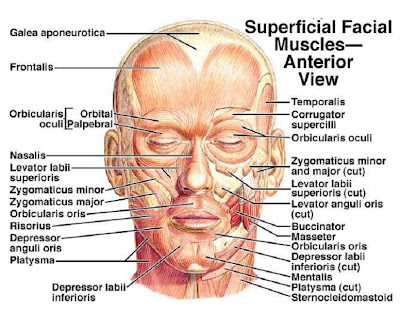This is a compendium to the Ecorche survey.
In this installment I'll be presenting an overview of the muscles of the skull and their
influences on surface anatomy.function, and expression.
influences on surface anatomy.function, and expression.
Edward Lanteri, in the classic Modeling and Sculpting the Human Figure, divides the muscles of the head into seven groups.Masticatory, Epicranial, Auricular, Ocular, Palpebral, Nasal, and Labial.. Palpebral refers to the palpebral fissure or the "eye opening" which together with the Ocular,Nasal and Labial and with some limited movement being contributed by the frontalis of the epicranial group, compromise the muscles of expression.The Masticatory, or muscles of chewing, include, the Temporal, the Masseter, the Internal Pterygoid, the External Pterygoid, and the Buccinator muscles.For the student of Drawing and Sculpture, the moving muscles of the head can thus be further simplified to the muscles of chewing/nourishment acquisition which are primarily side plane, and the muscles of expression which are primarily front plane.
For further reading a detailed illustrated course text is avaiable here:






No comments:
Post a Comment